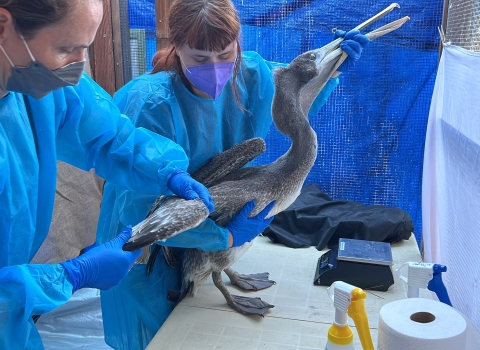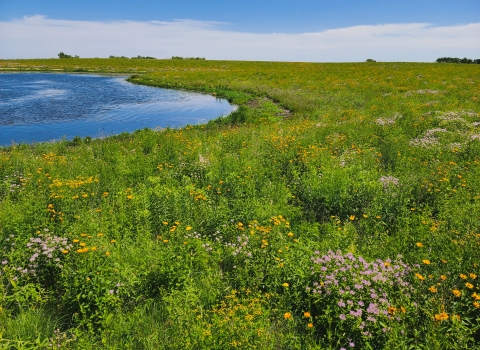DENVER – In an isolated natural spring tucked away in Scott County, Kansas, lives a rare native insect found nowhere else on earth: the Scott riffle beetle. The only known population of this tiny, brown-to-black aquatic beetle – first described by scientists in 1978 – is at Big Spring within Historic Lake Scott State Park. Yet just a few decades after scientists described the diminutive beetle, some worried the insect was potentially at risk of extinction due to its rarity, possible threats from decreased water quality and quantity over time and its single habitat location.
Thanks to ongoing conservation actions and protections by Kansas Department of Wildlife, Parks, and Tourism (KDWPT), today the U.S. Fish and Wildlife Service announced that federal protections for the beetle under the Endangered Species Act (ESA) are not warranted. This determination is based on a comprehensive review of the best available scientific and commercial information through a Species Status Assessment (SSA), in addition to relevant laws, regulations and policies.
Since 2016, the Service has been working with conservation partners, including KDWPT, to assess the conservation status of this unique aquatic Kansas insect. KDWPT and the Kansas Geological Survey contributed relevant information and expertise about Scott riffle beetle to help develop the Service’s SSA.
The single population of this insect appears to be healthy based on two monitoring efforts (1984 and 2017) that indicate no differences in population size over more than 30 years. Science also indicates that the beetle’s sole habitat will likely continue providing it with the resources needed to continue surviving in the wild.
The beetle and its spring habitat are protected from conservation threats by virtue of their unique location in the High Plains aquifer within Historic Scott Lake State Park. Ongoing management by KDWPT of the beetle and its habitat is expected to continue into the future. The key feature of the Scott riffle beetle’s habitat, Big Spring, will likely also continue to flow regardless of drought or groundwater reductions because the water source and uniqueness of the spring’s location in the High Plains aquifer buffers it from drying out.
KDWPT drafted a management plan and has been implementing conservation actions for the beetle since 2016. The Service is confident in KDWPT’s ability to continue managing for the beetle in the wild, based on the best available science. The Service will continue providing conservation support and guidance, as needed.
Even the tiniest native insects are a part of America’s shared natural heritage and unique lands and waters. At fewer than 3 millimeters long, the miniscule Scott riffle beetle is about half the length of a grain of rice. It lives underwater, moving across rock surfaces with flowing water that provides it with oxygen and breathes through an air bubble underneath its abdomen.
The Service revisited our previously published 90-day finding from 2016, which indicated at the time that federal protections may have been needed for the Scott riffle beetle. The Service followed up by developing a 12-month finding listing determination, in addition to developing an SSA, to inform whether or not federal protection for the Scott riffle beetle was warranted. We were most recently petitioned in 2013 by WildEarth Guardians to list the Scott riffle beetle as threatened or endangered under the ESA.
A notice in the Federal Register will be published by the Service announcing the not-warranted finding on October 7, 2019. The purpose of the ESA is to protect and recover imperiled species and the ecosystems upon which they depend. A rigorous scientific analysis evaluating potential threats as well as current and future conditions is conducted prior to making any determination to list or not list a species.
The U.S. Fish and Wildlife Service works with others to conserve, protect, and enhance fish, wildlife, plants, and their habitats for the continuing benefit of the American people. For more information, visit our website, or connect connect with us through any of these social media channels: Facebook, Twitter, Flickr, YouTube, and Instagram.


